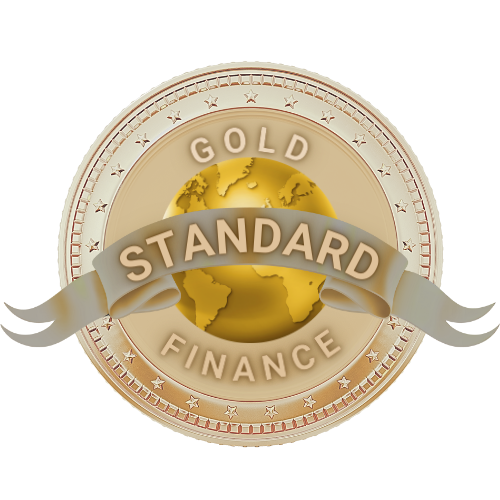The Market Loves IWG. The Numbers Don’t.
Despite a slick growth narrative, IWG’s fundamentals reveal a structurally fragile business with limited cashflow and a dangerously thin equity base.

KPI Performance (Income Statement Overview)
|
KPI |
FY21 |
FY22 |
FY23 |
FY24 |
|
Turnover |
3,005.6 |
3,329.3 |
3,689.0 |
3,690.0 |
|
Operating
Profit / (Loss) |
(70.2) |
213.0 |
174.0 |
517.0 |
|
Pre-tax
Profit |
(349.6) |
(127.1) |
(237.0) |
53.0 |
|
EBIT |
(68.8) |
211.8 |
180.0 |
492.0 |
|
EPS
(reported, p) |
(28.1) |
(8.4) |
(26.7) |
2.0 |
Note: IWG reports in USD, while its market cap is quoted in GBP.
IWG has experienced strong headline growth, and that is reflected in management’s market updates. The cumulative revenue growth for IWG from FY21 to FY24 is approximately 22.8%. Much of this is driven by new site openings. Like for like growth is far more muted.
On first glance the group is profitable at an operating level which is a great starting point, however, there is a catch. And it relates to how rent on operating leases is treated under IFRS 16, which was introduced in 2019. It is fairly long winded and worth a separate post in its own right, but the crux of the matter is that under pre IFRS (i.e. old world) rent was treated as an operating expense (i.e. ‘above’ the operating profit line). This all changed as a result of IFRS16 which required all operating leases to be capitalised, with associated rent costs treated as a financing expense and therefore treated below the line (underneath operating profit akin to a capital cost).
|
Impact of IFRS16 |
FY21 |
FY22 |
FY23 |
FY24 |
|
Operating Profit (reported) |
-70.2 |
213.0 |
174.0 |
517.0 |
|
Interest Paid (net) |
-263.2 |
-337.6 |
-423.0 |
-447.0 |
|
Pre-IFRS 16 Operating Profit (proxy) |
-333.4 |
-124.6 |
-249.0 |
70.0 |
This is a useful exercise as it shows IWG is in fact generating losses at an operational level. This is a critical distinction and one which cannot be picked up from a brief peruse of the financials. Anyway, as we can see true profits picture looks much worse, save for a nominal operating profit achieved in FY24.
The proxy operating profits losses are now more in line with the net profits losses generated. So with little accounting earnings to speak of we cannot find any reasoned explanation for the current market capitalisation.
“Show me the money balance sheet?”
|
Assets |
Liabilities & Equity |
||
|
Trade & Other Debtors |
922 |
Short-Term Borrowings (ex-leases) |
204 |
|
Tax Assets |
240 |
Lease Liabilities – Current |
1,131 |
|
Cash & Equivalents |
137 |
Accruals & Payables |
2,221 |
|
Goodwill & Intangibles |
1,375 |
Long-Term Borrowings (ex-leases) |
629 |
|
Tangible Fixed Assets |
6,116 |
Lease Liabilities – Long-Term |
5,031 |
|
Investments |
56 |
Deferred & Tax Liabilities |
460 |
|
Other Non-Current Assets |
747 |
Other Liabilities |
47 |
|
Shareholders’ Equity (NAV) |
93 |
||
|
Minority Interest |
50 |
||
|
Total Assets |
9,633 |
Total Liabilities + Equity |
9,633 |
Two things jump out from a review of IWG’s balance sheet. First off is the complete lack of any meaningful cash or equity. “What is the right amount you might ask” – well for a REIT or a typical listed property company, reasonable sweet spot would be an LTV less than 50%. This leaves headroom for any periods of choppy waters and specifically, avoid a property owner’s worst nightmare, a forced sale into a weak cycle due to a defaulted loan. The lower relative debt level would also allow for capturing such opportunities as they arise.
In IWG’s case, and let’s be charitable and assume 80% LTV is a fair amount of leverage. Applying this to IWG’s total assets of $9.6bn would result in a ‘desired’ equity amount of circa $1.9bn. However we can see that equity is only $93m which is virtually nothing given the size of the property portfolio. Cash on hand is also somewhat sparse at $137m (certainly against the short term balances of £2.2bn).
Secondly, and this builds on the first point, is that IWG is holding $1.4bn of intangible assets. It is unusual for property companies to have any intangibles outside of some modest IP (websites / technology & platform investments) . Normally one would expect to see these types of assets on the balance sheets of technology or pharmaceutical companies, such as software or research/IP assets. These are actual assets that have economic value and can be bought and sold in their respective industries. It is not clear what IWG has here and what all of this ‘goodwill’ is. It might be different if strong earnings are clear as day, but as we saw above this is not the case.
The result is that if these are excluded (which if you were acquiring this group you would do), then that results in a net tangible shareholders deficit, otherwise known as a technical insolvent position. The rationale is that such goodwill / branding has little attributable or component value.
So in the other words the balance sheet is very ‘top heavy’, lots of illiquid assets, with little cash or equity buffer to withstand stress or down cycles. This is the exact type of situation that any landlord tries to avoid.
Valuation
|
Metric |
FY22 |
FY23 |
FY24 |
|
Price to NAV |
6.5× |
55.2× |
31.7× |
|
Price to Free Cash Flow (Equity) |
(13.5)× |
34.4× |
593.5× |
|
Dividend Yield |
– |
0.25% |
0.25% |
|
Return on Assets |
0.7% |
2.5% |
0.2% |
The price to free cash flow is 593.5x, whilst also being negative in FY22 which shows how little cash flow is generated.
The dividend yield at .25% barely registers also. HSBC and chase offer a variety of easy access savers account with yields at circa 4%, which won’t shoot the lights out compared to real inflation. However at least that is risk free.
I have also included the return on assets metric, which strictly speaking is not a valuation measure. However it is a useful indicator to demonstrate how effectively a business is turning its assets into profits. It also cuts through all of the hype to ask, are these assets earning their keep. As is the recurring theme with IWG the answer is a firm no. The return on assets in two out of the last three years is less than 1%.
Conclusion
So with virtually no earnings, and what can only be described as a stretched balance sheet the £2.1bn valuation is stratospherically over priced. Certainly even with the most optimistic assumptions around growth and/or margin improvement, it’s near impossible to connect the dots and the logic of such a steep valuation.
The various valuation metrics also tell much of the story. One weak measure might raise concern but when all are weak this is a strong signal that performance is not where it needs to be.
One must also be cognisant that the model has an inherent liquidity mismatch. The liabilities are fixed well into the future (think fixed term leases with 6 to 10 years in duration), while tenant commitments are short term and liquid. Virtually all of the renters at IWG will be under licences which makes it easy for tenants to exit. In downturns this will represent a fundamental structural challenge that ultimately the main reason WeWork entered a Chapter 11 bankruptcy process.
Part of the answer lies in the way the numbers are presented in earnings updates. Most of the reporting focuses on top line turnover, centre openings and revenue per (franchised) partner and other similar metrics. Moreover, management tend to present pre IFRS16 EBITDA.
“Maintaining FY 2025 guidance with pre-IFRS 16 EBITDA range of $580-$620m on a constant currency basis and further leverage reduction”
On the face of it circa $600m worth of EBITDA is substantial and it can be easy to be swept up in such a large measure of profit. However the reality is far more sobering. After other lease costs, interest, and things like maintenance capex the residual cash available for investors is negligible, and probably negative during certain periods. The free cashflow in FY24 was a much more modest $5m (FY23: $71m).
All of this goes to show how going beyond reported headlines is key to understand what earnings and cashflows are supporting a valuation. At $2bn, the IWG share price is 32x its net asset value, a stratospheric premium for any company, especially a property business. By comparison to a competitor, the market is valuing Workspace Group (WKP) at half its book value (0.5x).
Therefore any disappointing announcement or catalyst could easily result in a sharp sell off and precipitous fall in its share price. Look out below.




